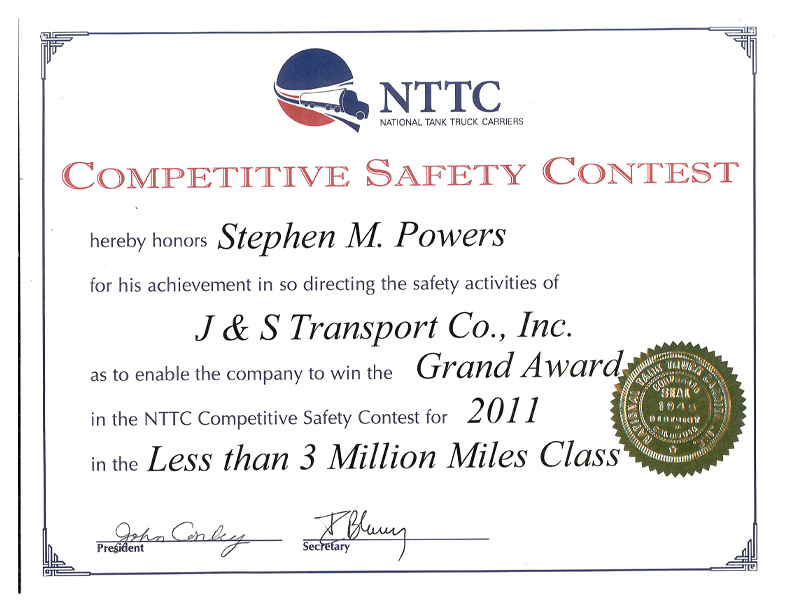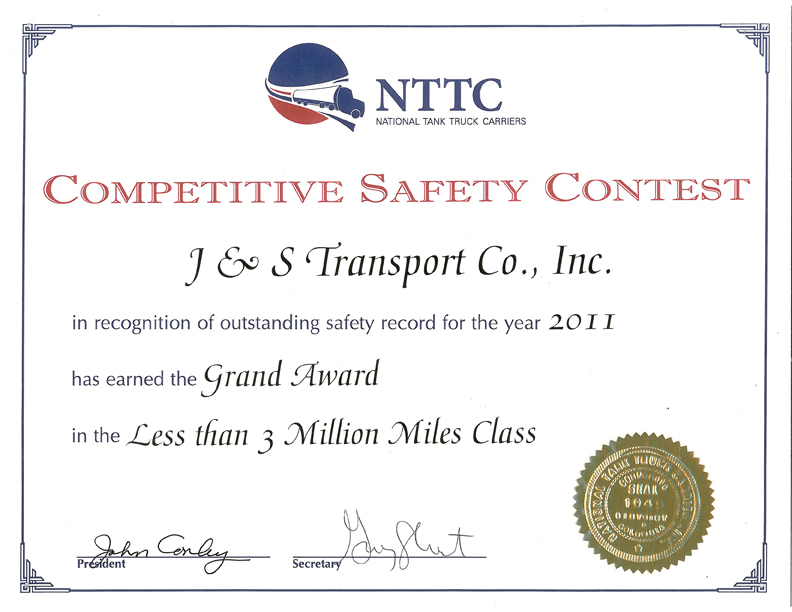Drivers Letters: Seat Belt Usage by Commercial Motor Vehicle Drivers
12 Washington Street
Lynn, MA 01904-3306
DOT Number: 638928
ICC# MC300615
Date: 05/01/2015
Dear Professional Driver,
In this month’s letter, we are going to revisit seat belt usage in Commercial Motor Vehicles (CMV’s). Since my last correspondence on this issue back in 2012, the Federal Motor Carrier Safety Administration (FMCSA) conducted the “Seat Belt Usage by Commercial Motor Vehicle Drivers” (SBUCMVD) Survey in 2013 showing the following results:
• Safety belt usage rate for drivers of all medium and heavy duty trucks and buses rose from 78% in 2010 to 84% in 2013
• The usage rate for drivers and other occupants in the West was 91% compared to the Northeast at 76%. The South came in at 83% and Midwest at 79%
• The Tanker industry rose from 82% in 2010 to 85% in 2013
While this survey shows significant improvements, especially in our industry, the figure standing out is the usage rate for the Northeast; the worst nationally. Why is that? We know New Hampshire does not have a seatbelt law however, it has no bearing on CMV drivers. Part 392.16 of the Federal Motor Carrier Safety Regulations specifically states:
“A commercial motor vehicle which has a seat belt assembly installed at the driver’s seat shall not be driven unless the driver has properly restrained himself/herself with the seat belt assembly.”
Simply put, it is the law. Reviewing the Unsafe Driving BASIC for New England Petroleum Carriers, I continually see carriers receiving violations for their drivers for not wearing their seatbelts. I cannot understand this when sobering statistics show:
• In 2011, one third of CMV drivers killed in crashes were not wearing their seatbelt
• 85% of those who perished in the sleeper berth were unrestrained
• From 2007 to 2009, 48 of the 49 who were unrestrained in the sleeper berth died
Hard statistics show that each year safety belts prevent 15,700 fatalities, 350,000 serious injuries, and $67 billion in costs associated with traffic injuries and death. The odds are in your favor to survive a crash when using your seatbelt. As the FMCSA touts:
“BE READY. BE BUCKLED.”
Steve


